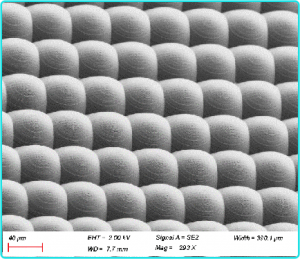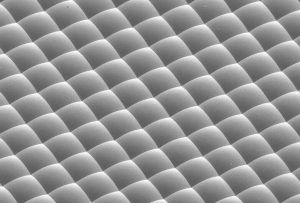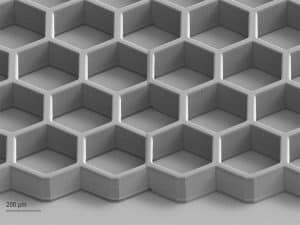
Micro and Nano Processing | MEMS Fine Processing (IV)
1.3 Photolithography
Photolithography, also known as photolithography, originates from the manufacture of integrated circuits in microelectronics. Photolithography is a key process technology for processing and making semiconductor structures or devices and integrated circuit micrographic structures. The principle is that the substrate material, such as silicon, is coated with photoresist, and then the photoresist is exposed through the mask using an energy beam with high ultimate resolution, and after the development, the same microscopic geometry as the mask pattern is obtained on the photoresist, and then microstructures are made on the workpiece material by etching and other methods. structure on the workpiece material by etching and other methods. The process of photolithography generally includes the production of the original image, lithography, substrate pretreatment, coating photoresist layer, pre-baking, exposure, and development.Shadow, firm film, corrosion and debonding, etc.
1.4 Etching technology
Etching is usually divided into isotropic etching and anisotropic etching. Isotropic etching allows the fabrication of microstructures with arbitrary lateral geometry, generally a few microns in height, and is limited to the fabrication of planar structures. Anisotropic etching can produce three-dimensional spatial structures with large aspect ratios and depths of up to several hundred microns.
(1 ) Chemical anisotropic etching
Chemical etching has a unique lateral under-etching property that allows the material to be etched at a rate that is dependent on crystal orientation. Monocrystalline silicon has crystalline faces with different crystallographic orientations, and the etching rate varies significantly between the crystallographic faces in alkaline solutions. The controlled doping of silicon introduces a very effective etch stop layer that prevents etching and enables selective etching to fabricate microstructures.
(2) Ion beam etching
Ion beam etching is also divided into focused ion beam etching and reactive ion beam etching. Focused ion beam etching can produce a submicron diameter beam at an ion density of the order of A/cm2, which can directly etch the surface of the workpiece, and the density and energy of the beam can be precisely controlled. It achieves atom-by-atom etching of the workpiece surface by transferring momentum from the incident ions to the surface atoms of the workpiece material, thus achieving nanometer-level manufacturing accuracy. Reactive ion beam etching is a physicochemical reaction etching method. The ion beam of a reactive gas is directed to the surface of the workpiece and reacts to form a product that is both volatile and easy to process by ion kinetic energy. It is a submicron micromachining technology.
(3) Laser etching
Laser etching usually uses YAG laser and excimer laser. Excimer laser is the most promising laser source due to its short wavelength, small focusing diameter, high power spectrum density, and cold light source. At present, the commonly used excimer lasers are argon fluoride laser and xenon fluoride excimer laser.
The far-ultraviolet laser beam generated by the argon fluoride excimer laser etches polymeric hard materials such as plastics, which not only etch extremely fine lines, but also produce no heat, and there is no heat diffusion or scorching around the material where the beam is focused. The material is etched not as a direct result of the intensity of the laser beam radiation, but as a result of the laser radiation, which breaks the chemical bonds between the polymer atoms and vaporizes at a relatively low temperature to produce small molecules.
And these tiny divisionsThe excimer laser takes away the excess heat from the laser pulse. The excimer laser produces far-ultraviolet light at a wavelength of 193 nm with a repetition frequency of 1 Hz or greater and a pulse width of 12 ns. A single pulse can etch grooves of several microns. With this laser pulse, the material can be peeled off layer by layer and etched with fine lines.
The near-ultraviolet wavelength of the xenon fluoride excimer laser is 300 nm, and the etching process is as follows: the silicon wafer placed in the chlorine gas is subjected to laser radiation, the chlorine molecule decomposes into chlorine atoms, and at the same time, the electrons on the silicon wafer subjected to laser radiation attach to the chlorine atoms, forming negatively charged chlorine ions, which in turn react chemically with the positively charged silicon atoms to form a volatile gas of silicon tetrachloride, which passes through the reactor Silicon tetrachloride is removed and fresh chlorine gas is supplied, so that the silicon wafer is corroded and the desired image is obtained without photoresist.
We offer fastMEMS device / micro and nanostructure processing design services, Feel free to leave a message to inquire.
Related Products
Related Reading
Thin Film Deposition丨Principles and Applications of Atomic Layer Deposition (ALD) Technology
Thin Film Deposition (ALD) Technology Principles and Applications
UV-LIGA Electroforming | Preparation of fine metal mesh panels with large thickness and high porosity
UV-LIGA Electroforming | Fabrication of Metal Array Stencils Current Preparation
MEMS Foundry Capabilities | Photolithography Plating Etching Coating
Micro and nano structure/MEMS foundry platform technology capability Laboratory platform has


